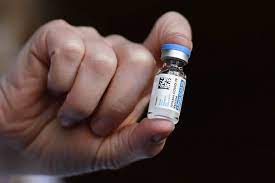U.S. Lifts Pause on Johnson & Johnson Vaccine

April 27, 2021
The Food and Drug Administration (FDA) and Centers for Disease Control and Prevention (CDC) announced their decision to lift the pause on the distribution of the Johnson & Johnson vaccine during a joint news conference held by the two agencies on April 23rd.
On April 13th, the FDA and CDC paused the circulation of the J&J vaccine after 15 cases of blood clots were identified in the U.S. in people after they received the Johnson & Johnson vaccine. All 15 cases were diagnosed in women aged 18 to 48 with their symptoms beginning about one to two weeks after vaccination. The CDC is referring to this condition as “thrombosis with thrombocytopenia syndrome,” or TTS, and while it is a rare occurrence, the blood clots’ effects are severe once recognized. Of the 15 women infected, 4 of them died, but one of the women of these 4 are not included in the case count because she contracted COVID-19 after receiving the vaccine.
Despite the danger these blood clots present in individuals who receive the J&J vaccine, the FDA and CDC have decided to continue distributing the vaccine because its benefits outweigh its risks. These combined 15 cases were out of over 6.8 million doses administered by J&J, which goes to show that being negatively affected by the vaccine is extremely rare. The CDC estimated that resuming the Johnson & Johnson vaccine will prevent around 600 to 1,400 deaths from happening as a result of COVID-19 but could lead to 26 to 45 blood clotting cases. Even out of the 26 to 45 cases, not all diagnosed with the condition would die of contracting TTS.
During the pause of the Johnson & Johnson vaccine, the FDA and CDC investigated the vaccine more closely to measure its benefits. The two agencies determined the following at their conference on Friday:
- The Johnson & Johnson vaccine should continue to be distributed in the United States.
- The vaccine is still safe and effective at preventing the spread of the coronavirus.
- The FDA has used data to conclude that the vaccine’s known benefits surpass its possible risks in recipients aged 18 and older.
- While the risk of TTS is low, the FDA and CDC will continue to study its possible risks.
- Recipients of the Johnson & Johnson vaccine (also called the Janssen vaccine) should review the Fact Sheet for Recipients and Caregivers beforehand to be aware of its risks.
The FDA and CDC decided to resume the circulation of the J&J vaccine but they will have a warning attached for its recipients. Experts stress that the pause of the Johnson & Johnson vaccine earlier this month should not discourage Americans from receiving a vaccine. The United States’ primary intent is to vaccinate as many of its citizens as fast as possible, but it requires cooperation from everyone eligible to receive one of the three authorized vaccines.

